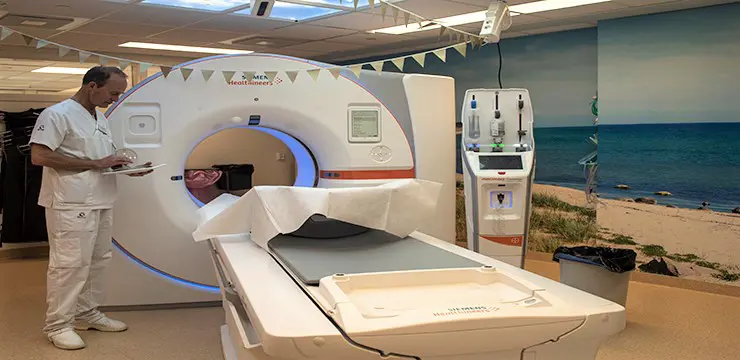Better diagnostics and significantly reduced radiation dose with a new computed tomography

“The big win is for our paediatric heart patients. Lung diagnostics are also significantly improved thanks to the high image sharpness, all the while the radiation doses are significantly reduced. In the long run, we hope to be able to include more patient groups. The CT scanner is very new, and we hope to get even better diagnostics as new updates are released gradually”, says Fredrik Stålhammar, Senior Consultant in paediatric radiology at Skåne University Hospital.
Computed tomography, CT, is a technology that takes detailed images of the body's organs. In Skåne, approximately 200,000 computed tomography examinations are performed per year. The detectors used in today’s computed tomography consist of crystals that release light when beams of x-rays are aimed at the patient. But the current technology has its limits when it comes to image resolution.
“With this new photon-counting technology, it is possible to detect discrete photons generated by the X-ray tube. The new detector is able to separate multiple energy levels and this data can be used to differentiate different tissue types. This means that we now can characterize tissues in a better way and make safer diagnoses”, Fredrik Stålhammar explains.
Simply put, the photon-counting CT scanner can measure the energy of each X-ray photon across the entire spectrum of radiation. This increases the image contrast and allows you to reduce the image noise more efficiently. This makes it possible to better distinguish tissues and at the same time, significantly reduce the radiation dose. The radiation dose can be reduced by between 30 and 50 percent, depending on the type of examination in question.
“With this technology, we get a better outcome of the CT scans and much more useful information based on the radiation that we, after all, still expose patients to”, Fredrik Stålhammar says.
Sara Odén works as an CT scan nurse at Skåne University Hospital in Lund. She is pleased every time she sees the results of the CT scans.
“It is exciting that Skåne University Hospital is among the first in Sweden to have this technology. Every time we run examinations, we look at the CT scan dose and are very happy when we see that it goes down and that the images are high in sharpness and contrast”, she says.

